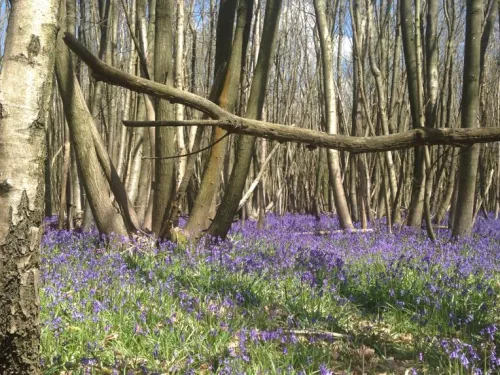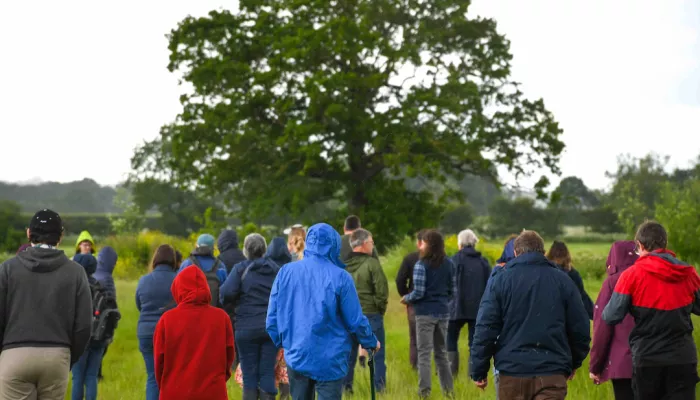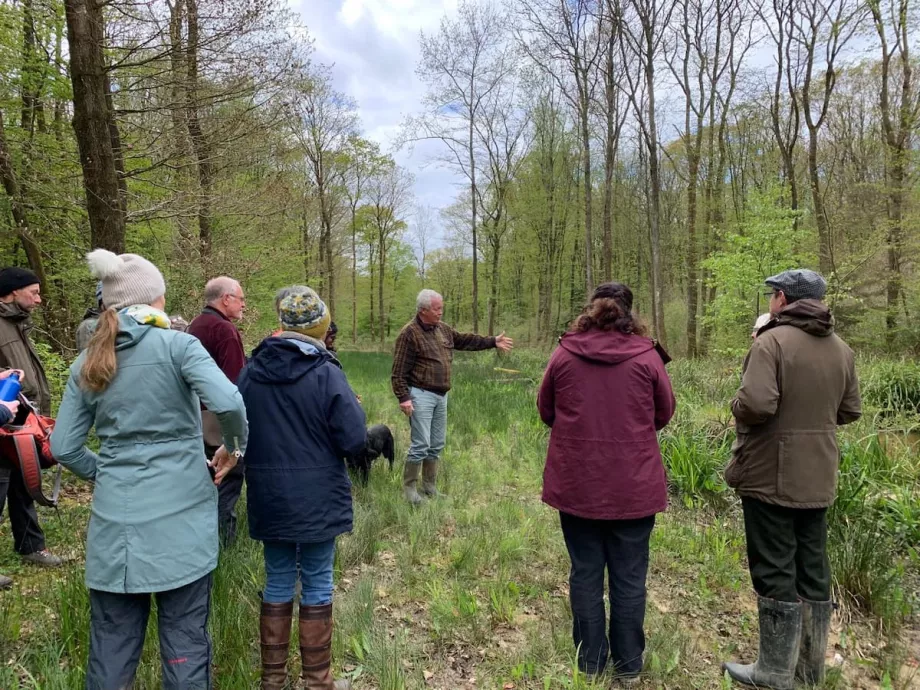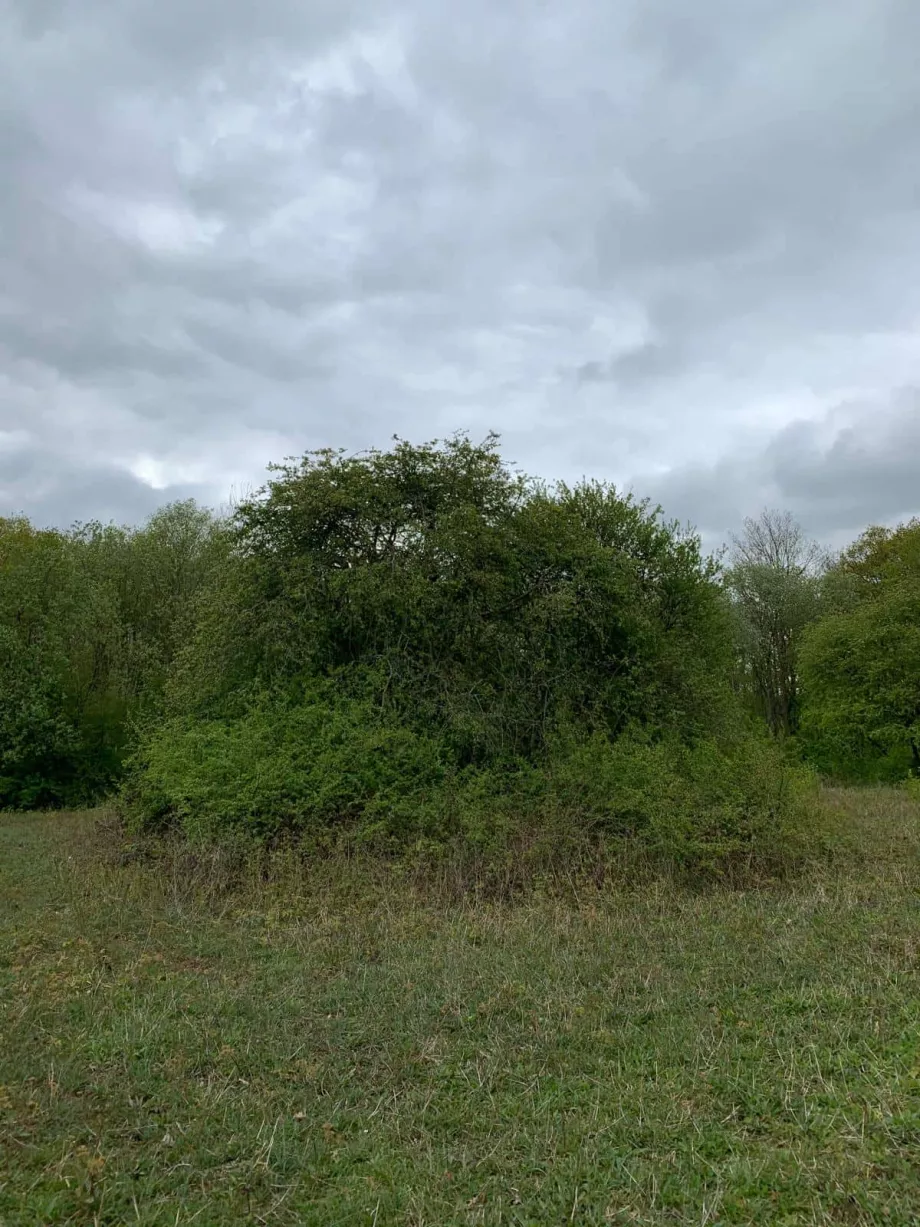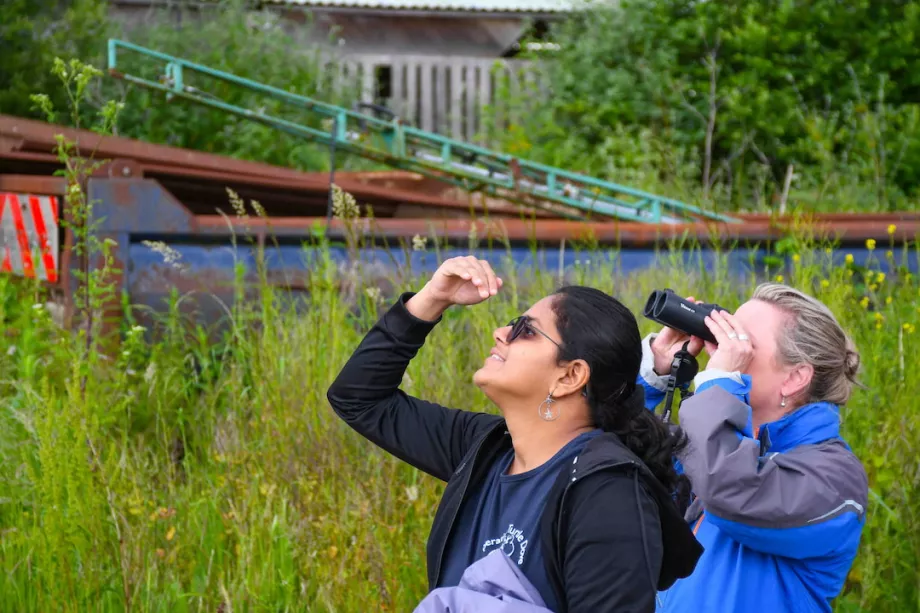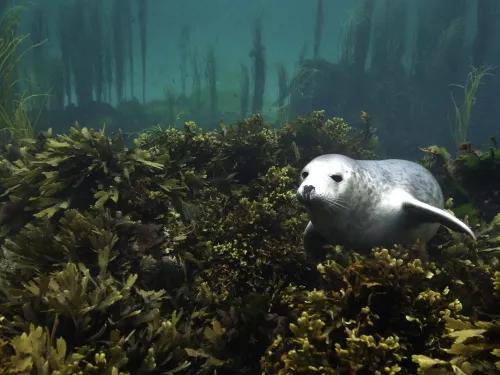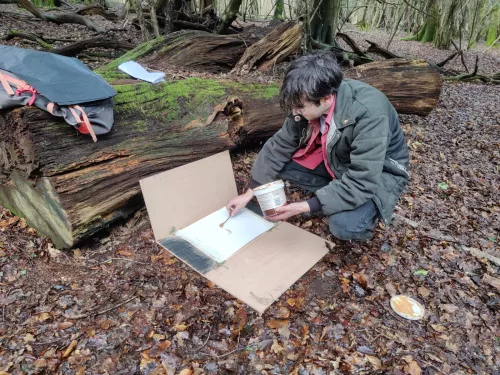And just then, we heard it. The unmistakable hail of the male nightingale. After some frantic shushing we all stopped for a moment and listened, absorbing the echoing melody and rattattatt ricocheting off the trees.
We heard a few more nightingales on the route through the farm, which saw us pass through a balance of scrubby understory and open pasture; a mosaic of habitat ideal for these birds. Although an obvious highlight, a blast from the prolific songsters was not the only aim of the day. The walk was peppered with chat of those getting to know each other and sharing knowledge.
The Marden area has some of the most impressive turtle dove records in Kent. The second of our events was held here, at Moatlands Farm. During introductions, the owner, Christine, told us she had seen a regular pair and single male that morning, calling from the telephone wires just beyond the farmyard. Early morning is ideal for turtle doves, so we weren’t expecting these individuals would still be around. However, we had barely left the yard before we saw a small pigeon-like silhouette fly up to settle in a dead tree, classic turtle dove behaviour. Twelve pairs of binoculars soon confirmed it was who we were looking for, before hearing the gentle turr-turring of the turtle dove. I had never heard or seen one, and I won’t forget it.
As we walked on, Shivani showed us ideal areas of bare feeding ground and techniques for scattering mixed seed; a tried and tested recipe which Operation Turtle Dove can provide for farms to encourage the birds. We passed evidently considered wildlife friendly areas; species rich grassland and dense hedgerows, wide field margins and buffer strips.
